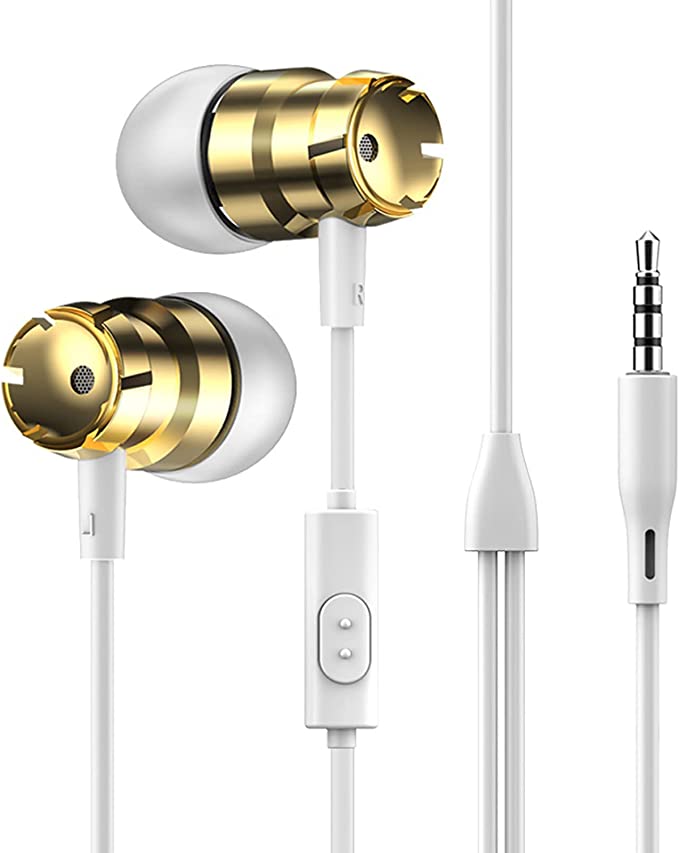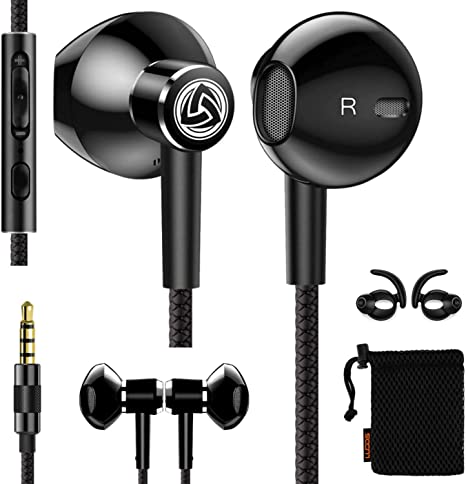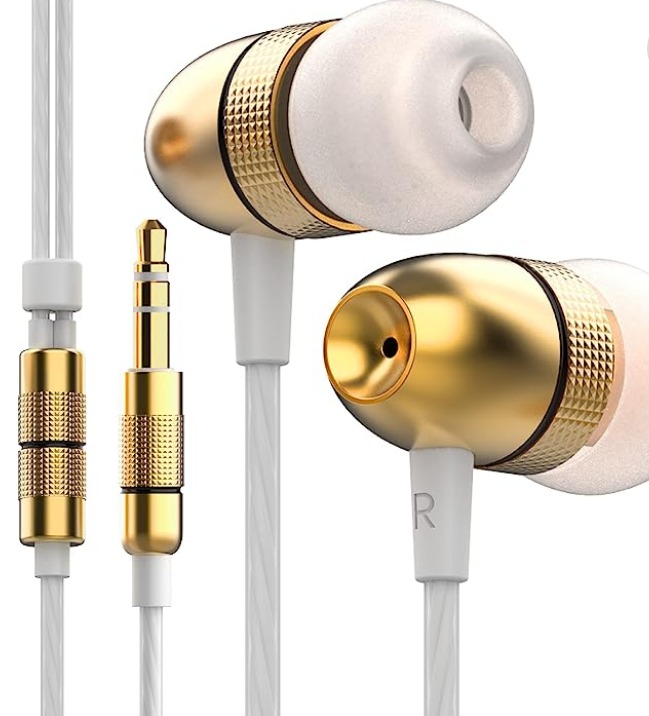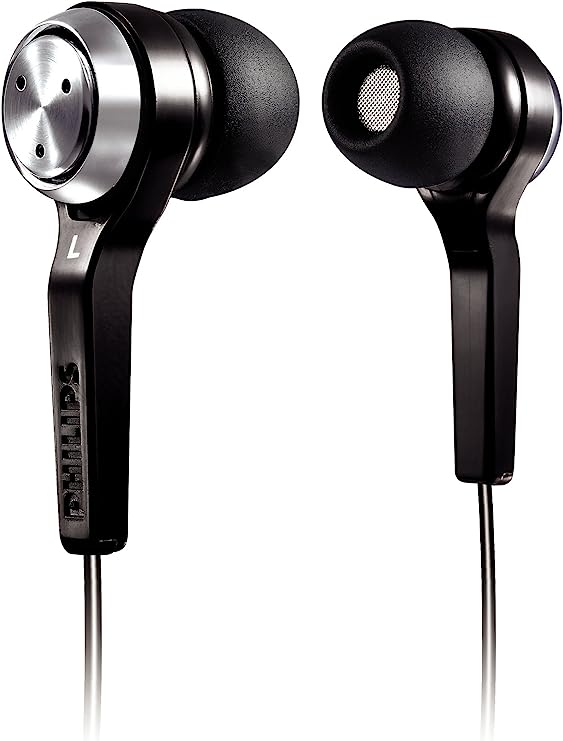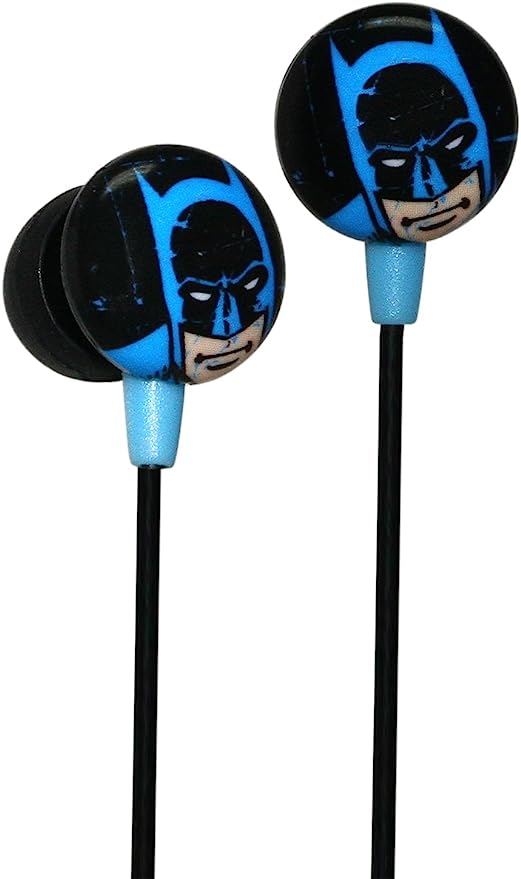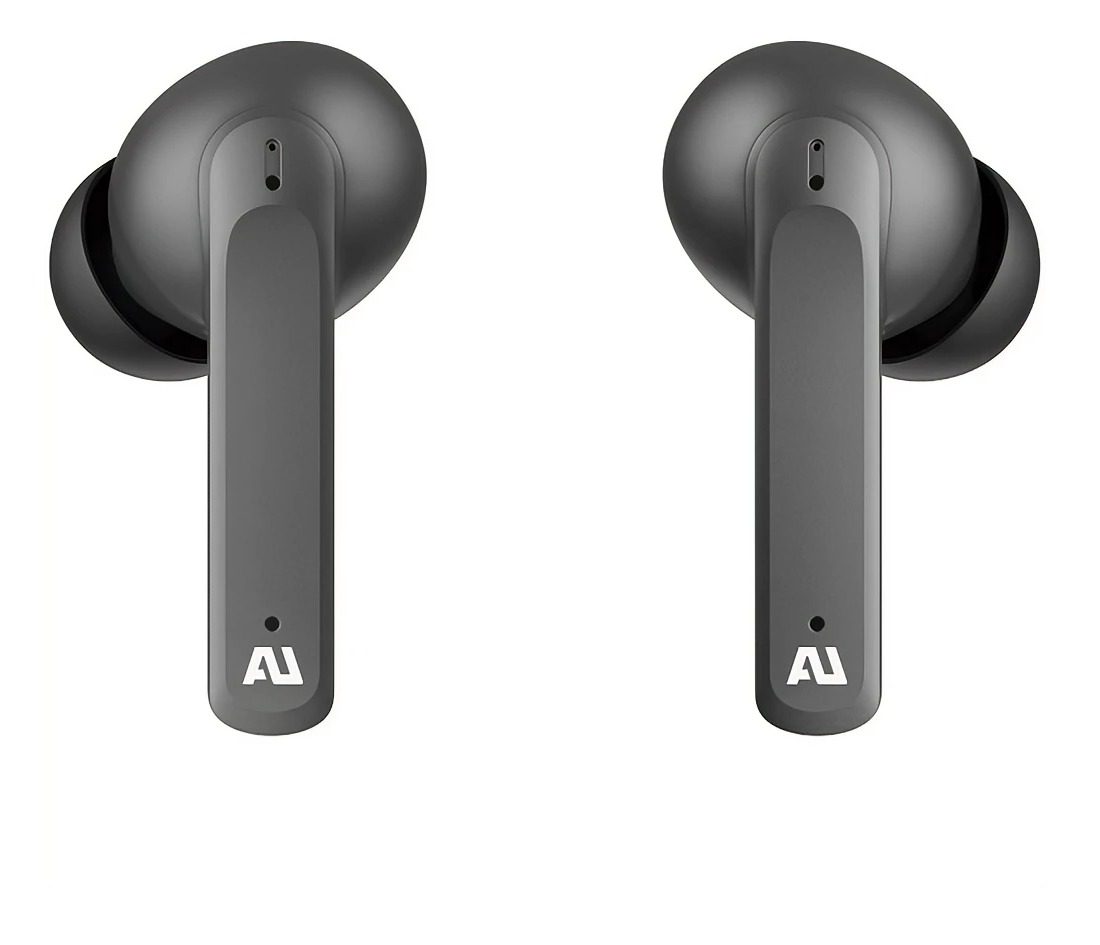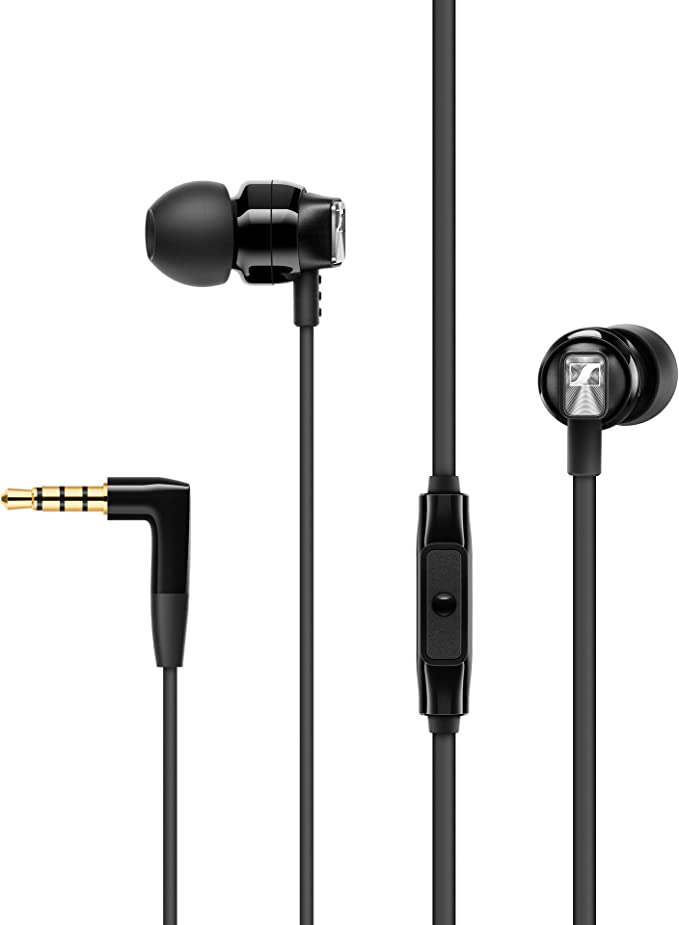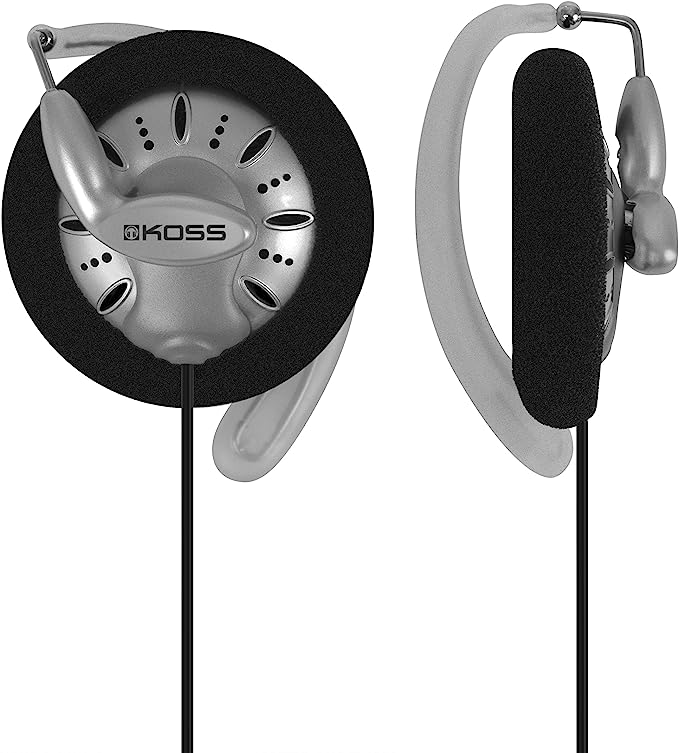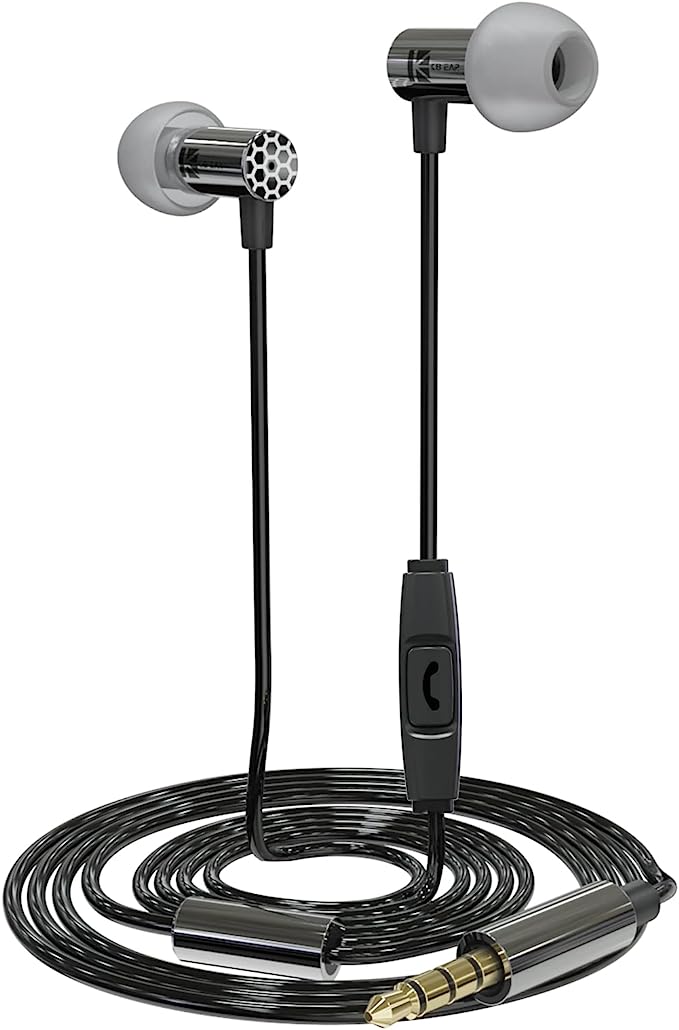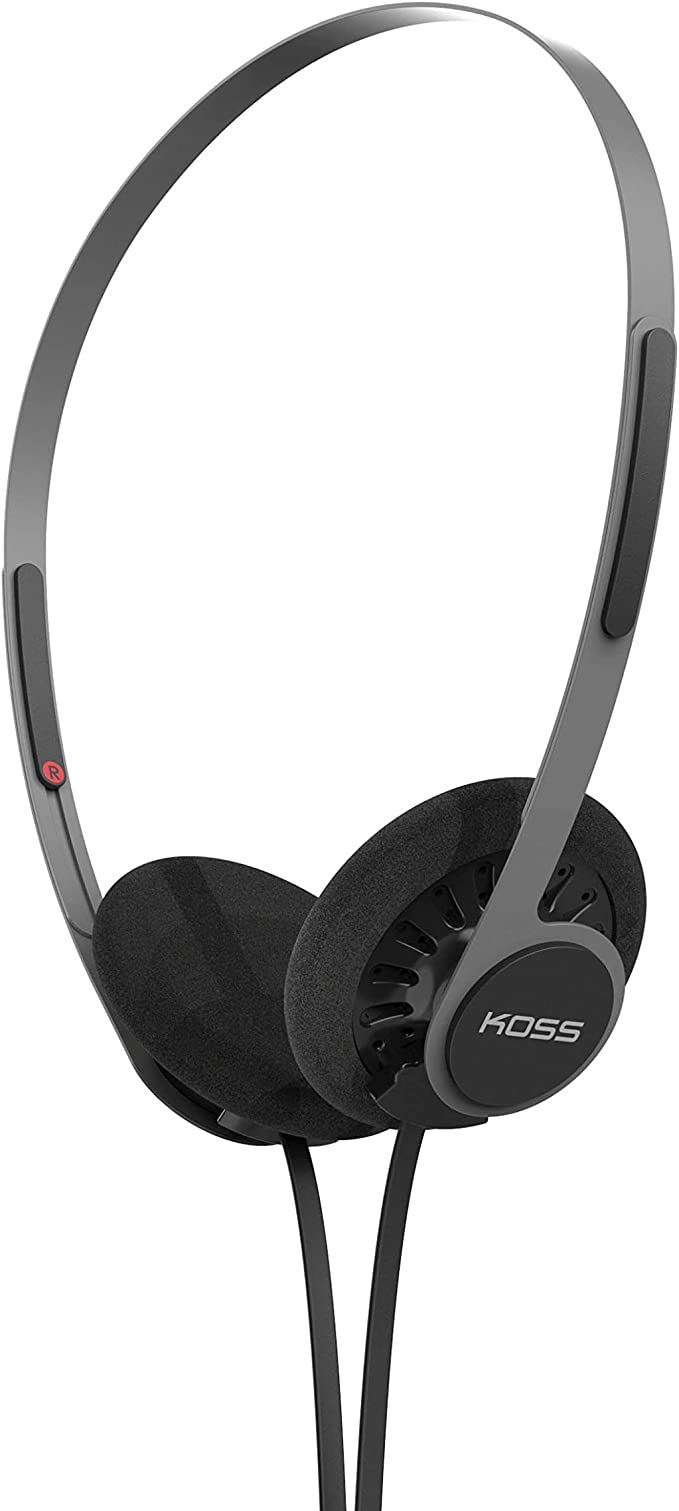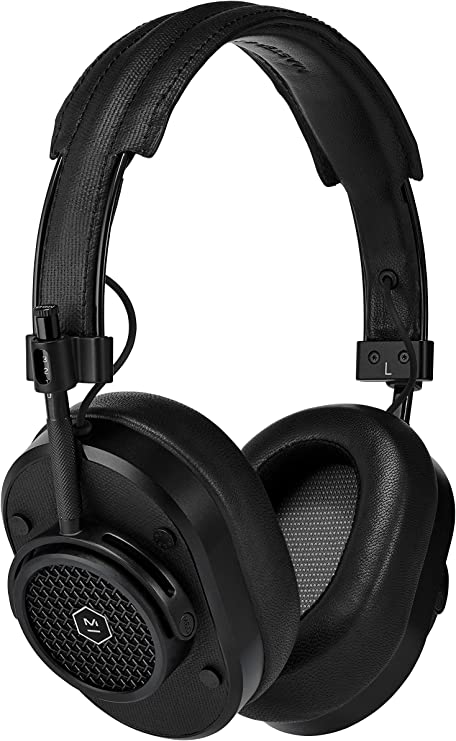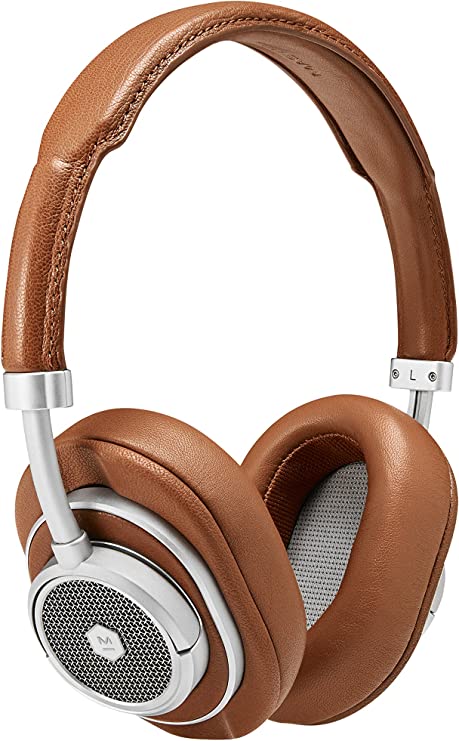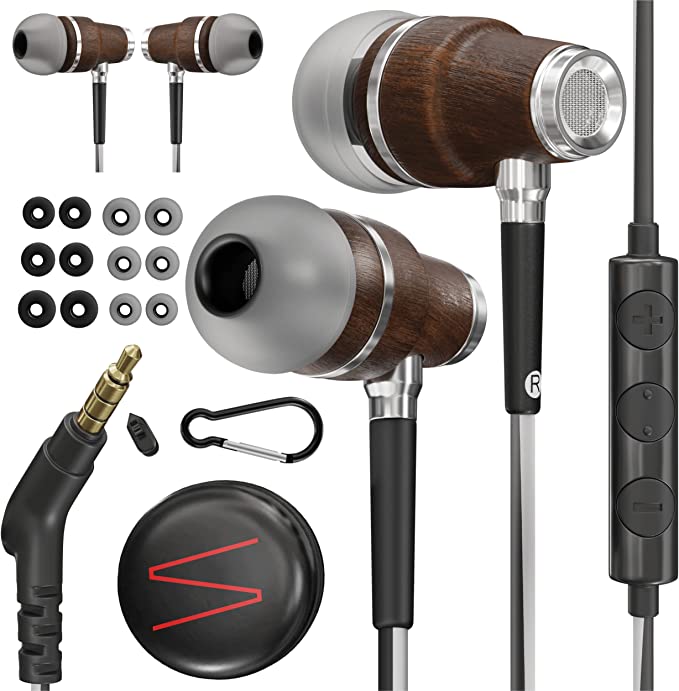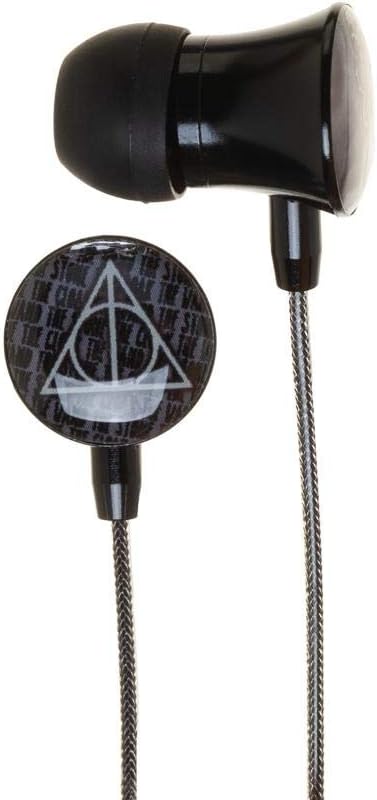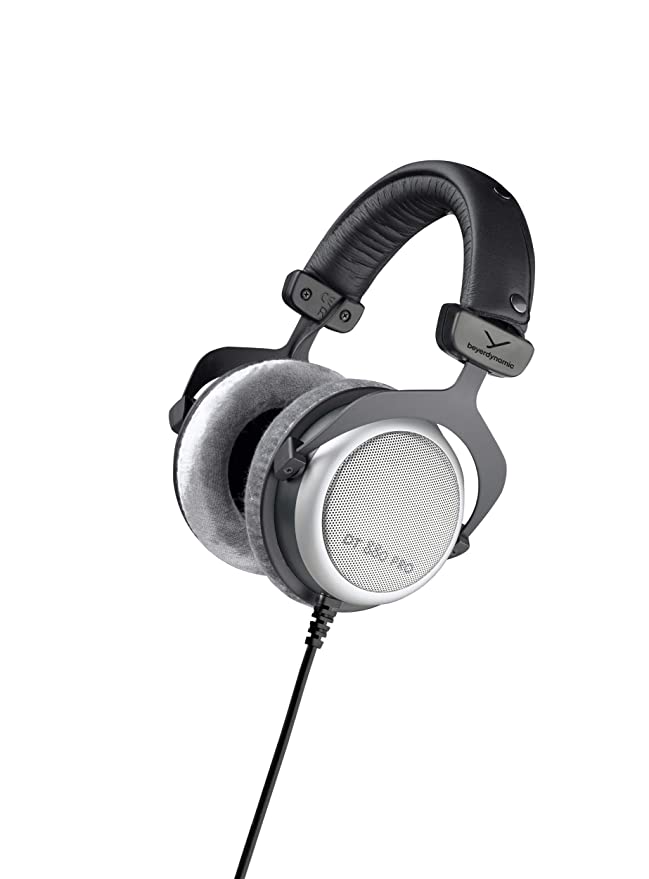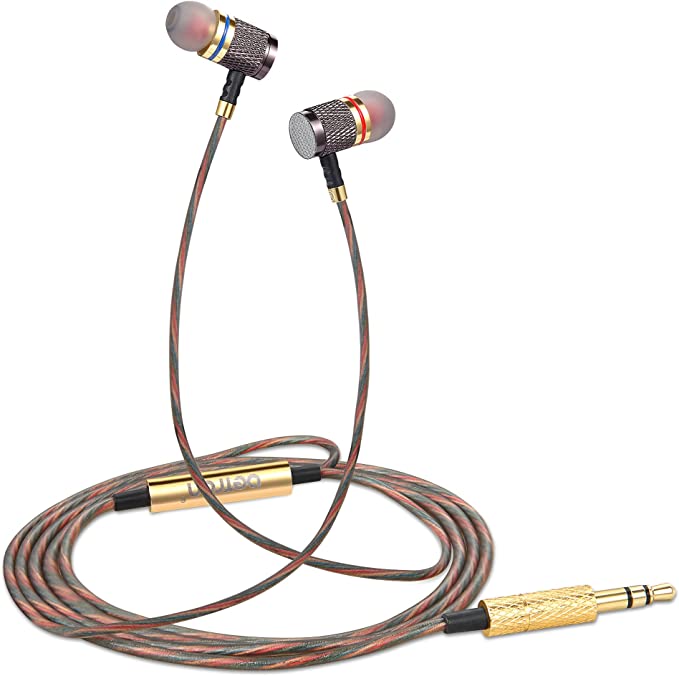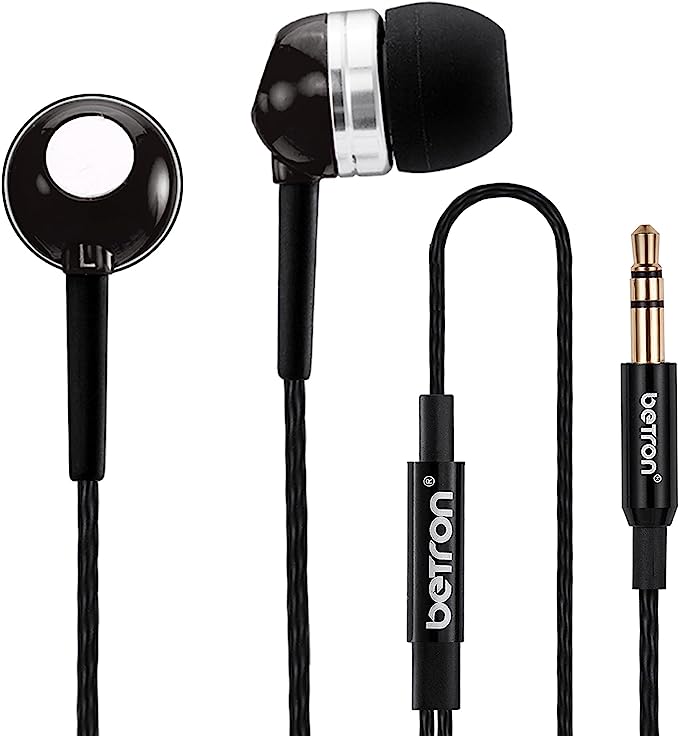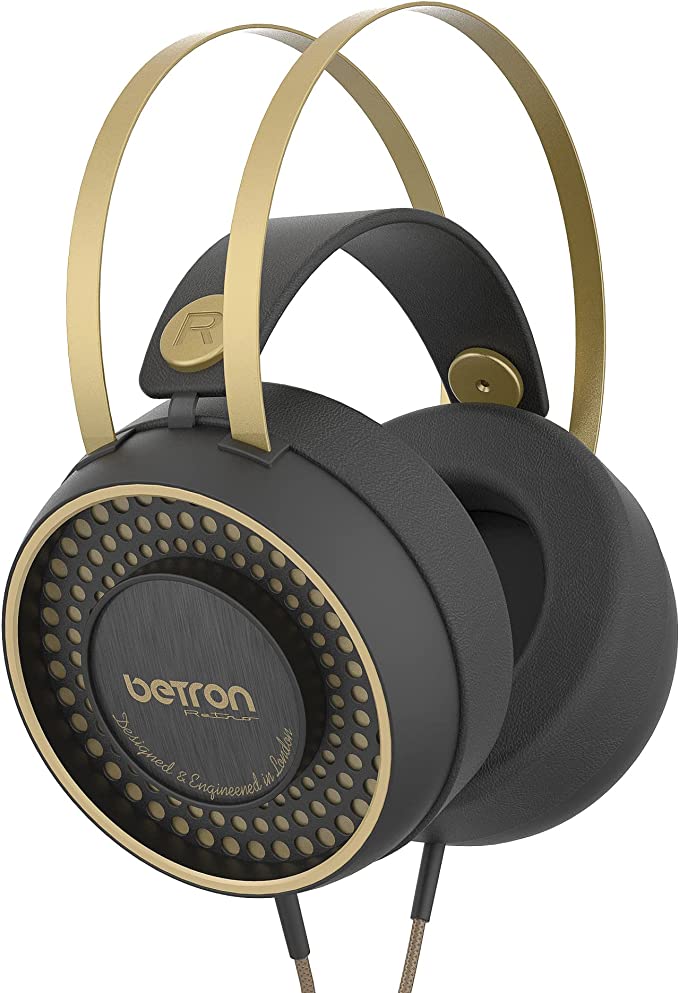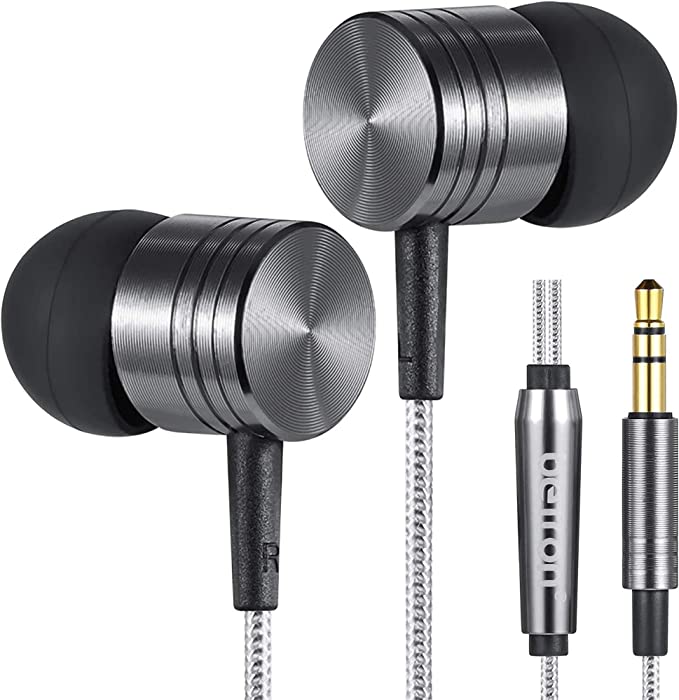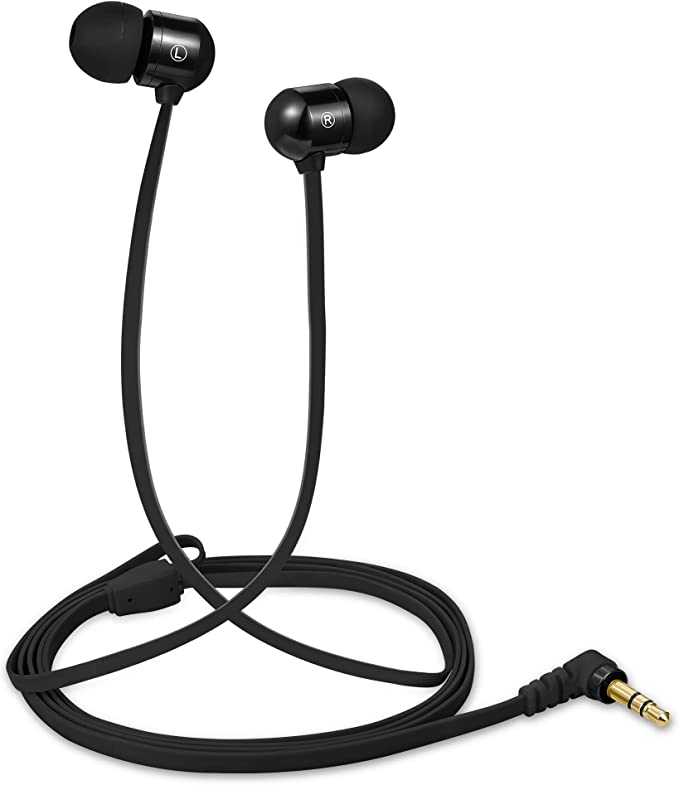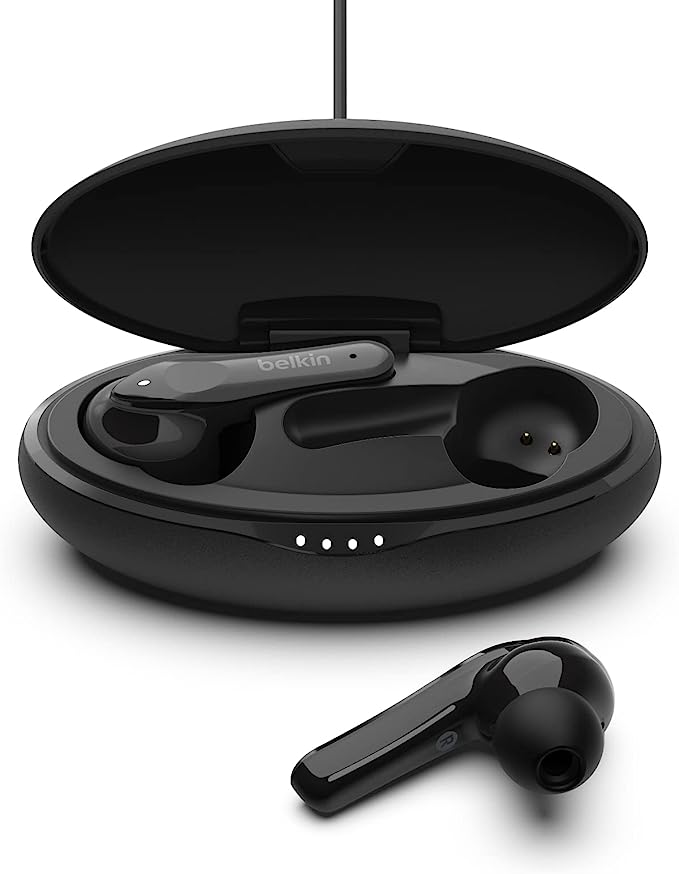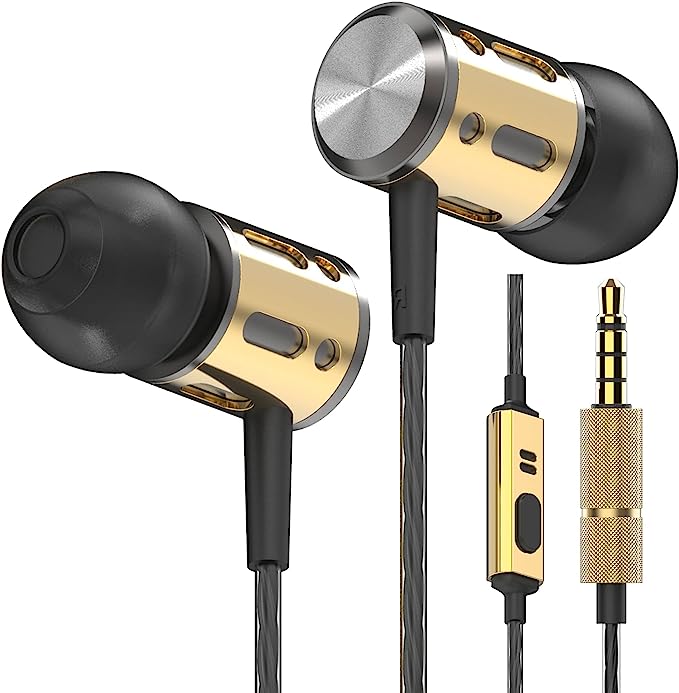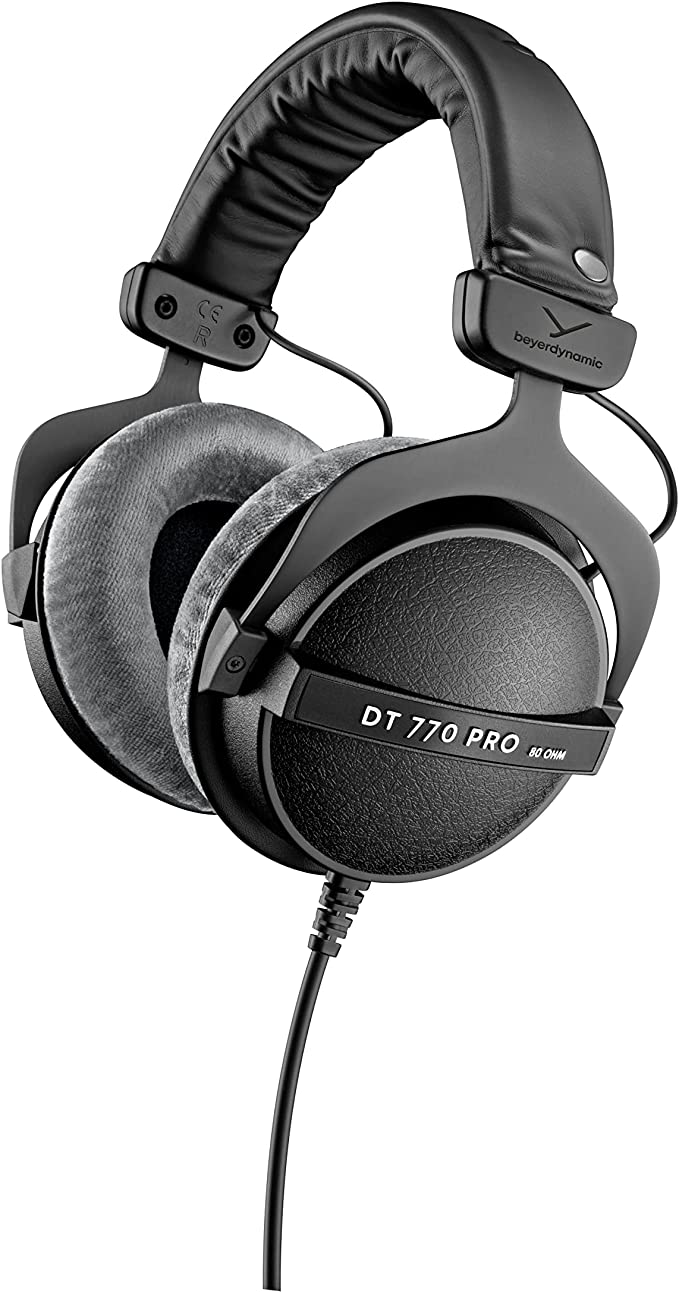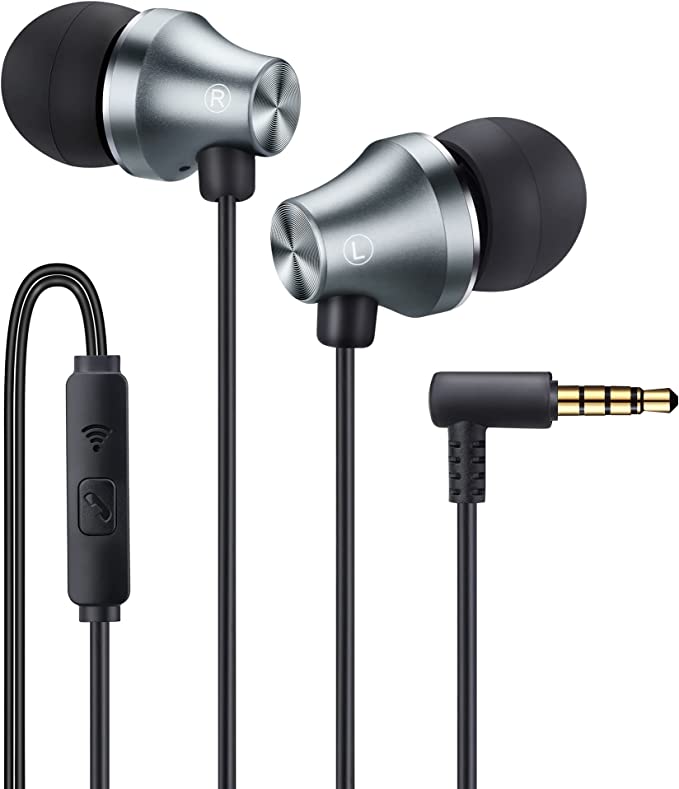Koss The Plug In-Ear Headphones: Superior Sound Isolation and Comfort
Update on March 21, 2025, 1:03 p.m.
We live in a world saturated with sound. From the gentle hum of a refrigerator to the cacophony of a busy city street, our ears are constantly bombarded with auditory information. While sound can be beautiful, informative, and even therapeutic, there are times when we crave a moment of quiet, a personal sanctuary where we can escape the noise and immerse ourselves in our own thoughts or music. This desire for personal audio spaces has driven the evolution of headphones, transforming them from bulky contraptions to sleek, sophisticated devices that fit snugly in our ears.

The Physics of Sound: More Than Meets the Ear
Before we delve into the intricacies of in-ear headphones, let’s take a moment to appreciate the fundamental nature of sound itself. Sound is, at its core, a vibration that travels through a medium, such as air, water, or solids. This vibration is characterized by several key properties:
- Frequency: This refers to the number of vibrations per second, measured in Hertz (Hz). Higher frequencies correspond to higher-pitched sounds, while lower frequencies correspond to lower-pitched sounds. The human ear can typically perceive frequencies ranging from 20 Hz to 20,000 Hz.
- Amplitude: This refers to the intensity or strength of the vibration, which we perceive as loudness. Amplitude is often measured in decibels (dB).
- Wavelength: This is the distance between two successive peaks (or troughs) of a sound wave. Wavelength is inversely proportional to frequency; higher frequencies have shorter wavelengths, and lower frequencies have longer wavelengths.
- Speed: The speed at witch sound travels, is determined by the medium.
Imagine dropping a pebble into a still pond. The impact creates ripples that spread outward in concentric circles. These ripples are analogous to sound waves, with the pebble’s impact representing the source of the vibration. The height of the ripples corresponds to the amplitude, the distance between them corresponds to the wavelength, and the number of ripples passing a given point per second corresponds to the frequency.

The Human Ear: Nature’s Masterpiece of Acoustic Engineering
Our ability to perceive sound is a testament to the remarkable engineering of the human ear. This intricate organ is divided into three main sections:
- The Outer Ear: This includes the pinna (the visible part of the ear) and the ear canal. The pinna helps to collect and funnel sound waves into the ear canal.
- The Middle Ear: This air-filled cavity contains three tiny bones: the malleus (hammer), incus (anvil), and stapes (stirrup). These bones act as a lever system, transmitting vibrations from the eardrum to the inner ear.
- The Inner Ear: This contains the cochlea, a fluid-filled, snail-shaped structure lined with thousands of tiny hair cells. These hair cells are responsible for converting mechanical vibrations into electrical signals that are sent to the brain via the auditory nerve.
The ear canal itself plays a crucial role in how we perceive sound. It acts as a resonant tube, amplifying certain frequencies more than others. This resonance typically occurs in the range of 2,000 to 5,000 Hz, which is also the range where human speech is most prominent.

From Gramophones to Earbuds: A Brief History of Personal Audio
The quest for personal listening experiences predates the digital age. Early attempts included listening tubes and stethoscope-like devices connected to phonographs. The first true headphones, as we understand them today, were developed in the early 20th century, primarily for military and telecommunications use. These early headphones were bulky and often uncomfortable, but they represented a significant step forward in personal audio technology.

The invention of the transistor in the mid-20th century revolutionized electronics, paving the way for smaller, more portable audio devices. This, in turn, fueled the demand for more compact and comfortable headphones.
The Koss Legacy: Pioneers of Personal Listening
In 1958, John C. Koss changed the landscape of personal audio forever. He invented the world’s first stereo headphones, the Koss SP/3. This groundbreaking invention allowed listeners to experience music in a way they never had before, with separate audio channels for the left and right ears, creating a sense of depth and immersion. This innovation marked the beginning of the personal listening revolution, transforming the way people consumed music.
The Plug: Simplicity and Science in Harmony
The Koss The Plug, a seemingly simple in-ear headphone, embodies the legacy of Koss’s innovation. It’s a product designed with a clear understanding of acoustic principles, prioritizing both comfort and sound isolation. Unlike many in-ear headphones that rely on rigid plastic or ill-fitting silicone tips, The Plug utilizes a unique approach: memory foam.

The Comfort of Quiet: Memory Foam and Noise Isolation
-
Material Science: Memory foam, also known as viscoelastic polyurethane foam, is a material renowned for its ability to conform to the shape of an applied force and then slowly return to its original form. This property is crucial for The Plug’s exceptional comfort and noise isolation. When inserted into the ear canal, the memory foam gently expands, creating a custom-fit seal that blocks out a significant amount of ambient noise. This is passive noise isolation – blocking sound through physical means, rather than electronic cancellation.
The effectiveness of memory foam as a noise-blocking material stems from its complex cellular structure. It’s not just about being soft; it’s about the foam’s density and its ability to dissipate energy. When sound waves encounter the memory foam, they cause the foam’s cells to vibrate. These vibrations are then dampened by the foam’s internal structure, converting the sound energy into tiny amounts of heat. This is a far more effective barrier than a simple, rigid piece of plastic.
-
The Ear Canal as a Resonator: As mentioned earlier, the ear canal acts as a resonant tube. The Plug, when properly inserted, effectively changes the length and shape of this “tube.” By creating a seal at the entrance of the ear canal, it minimizes the amount of external sound that can enter and excite the ear canal’s natural resonance. This further reduces the perception of ambient noise.
-
Comparison with other materials: Compared to standard silicone or hard plastic, the advantages are clear. Silicone can create a seal, but is often less adaptable to different ear shapes, leading to discomfort or leakage. Hard plastic is even less adaptable, and readily transmits vibrations.
Sound Reproduction: The Heart of The Plug
-
Dynamic Drivers Demystified: The Plug, like most headphones, uses dynamic drivers to convert electrical signals into sound waves. Imagine a tiny, incredibly fast-moving loudspeaker. At its core is a diaphragm, a thin, lightweight membrane. Attached to this diaphragm is a coil of wire, called the voice coil. This voice coil sits within a magnetic field created by a permanent magnet. When an electrical audio signal flows through the voice coil, it creates a varying magnetic field. This varying field interacts with the permanent magnet’s field, causing the voice coil – and thus the attached diaphragm – to move back and forth rapidly. These vibrations of the diaphragm push and pull on the air molecules in front of it, creating the sound waves that we hear. The speed and amplitude of these vibrations determine the frequency and loudness of the sound produced.
-
Frequency Response and Impedance: Two key specifications often associated with headphones are frequency response and impedance. The Plug’s frequency response is stated as 10-20,000 Hz. This indicates the range of frequencies the headphones can reproduce. While the human hearing range is generally considered to be 20-20,000 Hz, the extension down to 10 Hz suggests that The Plug is capable of reproducing very low bass frequencies, even if they are not fully audible. A wide frequency response doesn’t necessarily guarantee good sound quality, but it’s a prerequisite for accurately reproducing the full spectrum of musical sounds.
Impedance, measured in ohms (Ω), is a measure of how much the headphones resist the flow of electrical current. The Plug has an impedance of 16 ohms. This is considered relatively low impedance, meaning it can be driven to reasonably loud volumes by low-power devices like smartphones and portable music players without requiring a dedicated headphone amplifier. Higher impedance headphones often require more power to achieve the same volume level.
-
The role of Acoustical Vents: The product description mentions “acoustical vents.” These are small, strategically placed openings in the headphone housing. While seemingly counterintuitive for noise isolation, these vents are not designed to let outside sound in. Instead, they serve a crucial purpose in tuning the sound of the driver. They can help to:
- Relieve Pressure: In a completely sealed in-ear design, the movement of the diaphragm can create pressure build-up within the ear canal, leading to discomfort and a “stuffy” sound. Vents can alleviate this pressure.
- Control Bass Response: By carefully controlling the airflow around the driver, vents can be used to shape the bass response, preventing it from becoming boomy or muddy. They essentially act as a carefully tuned “leak.”
- Improve Soundstage: In some designs, vents can contribute to creating a wider and more natural soundstage (the perceived spatial location of sounds).
-
The “Sound Signature” of The Plug: While we don’t have access to detailed measurements like a frequency response graph, the combination of the dynamic driver, memory foam eartips, and acoustical vents likely contributes to a sound signature that emphasizes bass response (due to the excellent seal) and provides good clarity across the frequency range. The passive noise isolation would also enhance the perceived detail in the music by reducing the masking effect of ambient noise. User reviews often mention a “good” or “balanced” sound, suggesting that the tuning avoids excessive emphasis on any particular frequency range. However, it’s worth noting that “good sound” is subjective and depends on individual preferences.
The Psychology of Sound: Beyond the Physics
Our perception of sound isn’t solely determined by the physical properties of sound waves. Psychoacoustics is the field that studies the relationship between the physical characteristics of sound and our subjective experience of it. Here are a few relevant concepts:
- Loudness Perception: Our perception of loudness isn’t linear. A doubling of sound pressure level (measured in dB) doesn’t necessarily correspond to a perceived doubling of loudness.
- Pitch Perception: Our perception of pitch (how high or low a sound is) is primarily determined by frequency, but it can also be influenced by loudness and the presence of other sounds.
- Masking: A louder sound can make it difficult or impossible to hear a quieter sound, especially if they are close in frequency. This is a key reason why noise isolation is so important for enjoying music in noisy environments. The Plug’s passive noise isolation reduces the masking effect of ambient noise, allowing you to hear more detail in your music at lower, safer listening levels.

Real-World Applications: The Plug in Your Life
The Koss The Plug’s combination of comfort, sound quality, and noise isolation makes it suitable for a variety of everyday situations:
- Commuting: Blocking out the rumble of trains, buses, and traffic noise can make your commute much more enjoyable and less stressful.
- Exercise: The secure fit provided by the memory foam eartips helps to keep The Plug in place during workouts. While not specifically designed for sports, many users find them suitable for moderate exercise.
- Studying and Working: Creating a quieter environment can improve focus and concentration.
- Travel: Reduce Airplane noise.
Listen Responsibly: Protecting Your Hearing
While enjoying your music is important, protecting your hearing is paramount. Prolonged exposure to loud sounds can cause permanent hearing damage. Here are some tips for safe listening:
- Use the 60/60 rule: Listen at no more than 60% of your device’s maximum volume for no more than 60 minutes at a time.
- Take breaks: Give your ears regular breaks from listening to loud sounds.
- Be aware of your surroundings: Don’t use headphones in situations where you need to be aware of your environment, such as while driving or cycling.
- Consider a lower volume: The noise isolation from the plug can reduce the need to increase the volume.
Conclusion: A Simple Solution to a Complex Problem
The Koss The Plug in-ear headphones are more than just a simple pair of earbuds. They represent a thoughtful application of acoustic principles to address the challenges of modern listening environments. By combining the comfort and noise-isolating properties of memory foam with a well-engineered dynamic driver and acoustical vents, The Plug offers a compelling balance of sound quality, comfort, and affordability. It’s a testament to the enduring legacy of Koss, a company that continues to innovate in the field of personal audio, providing a simple, yet effective, solution to the complex problem of enjoying music in a noisy world.
